Flashing a new OS… to a flashlight?
Wait what? Flashlights have an OS? Why would you do this? What is happening here?
Well sit down my little birdies, let me feed you…

I’ll start off by explaining that this isn’t your regular flashlight. You don’t walk in to a Target and buy this, and it does a lot more than just turn off and on. This light was a group project from the incredible folks on BLF (Budget Light Forum). The model is Q8, and it’s a 5000 peak-lumen soda-can style light. I’ve owned this light for a couple years and it has been an absolute work horse, seeing me through power outages, and even a tornado. This is an enthusiast-level light with multiple features, like a brightness ramping mode, brightness-stepped mode, strobe light modes, and other various features like battery voltage checking and more. The “OS” of the flashlight is basically how the interface is configured. Everything is performed through the single clicky button on the side of the light, and different modes are access through different patters of clicks. For example, 2 clicks goes straight to high mode, 3 clicks shows you the battery voltage via a series of flashes.
What you’re looking at above is just the head of the light with its circuit board removed, which contains the driver chips and the microcontroller that contains the OS. Some newer lights like the one in the background (A brass Emisar D4v2) of the picture actually have headers on the underside of the board so that you don’t have to pull the board out, but this light requires it. Fortunately it is pretty easy, just a couple screws and you’re in. Once I had the driver board out, I attached a chip programmer to the onboard microcontroller, an ATtiny85. This light was running firmware from a couple years ago, and a lot of progress has been made in the world of single-button interfaces since then. It was running a previous-gen OS called “Narsil” which has been replaced with a completely re-written firmware called “Anduril”. Anduril makes the light easier to use and configure, as well as navigate its menus, and adds several new modes that weren’t even possible with Narsil. The brass light in the picture above is also running Anduril, and was my first taste of the new OS. I liked it so much that I had to acquire the programmer necessary to get it on to my big soda-can light (and will also allow me to keep my D4v2 up to date as well). I couldn’t have done it with this fantastic documentation thread on BLF which made this whole adventure even possible.
I successfully flashed Anduril on to my BLF Q8 and it is now easier to use, with more configuration options, and more modes than before. It’s a really nice light, and the new firmware on it has really been a breath of fresh air in to its life. It is also nice not having to remember how Narsil works, as it was a bit complicated and finicky compared to the improved Anduril interface.
A completely pointless (but really neat) feature called lightning mode that the Q8 could not do before, matching my D4v2:

Leave a Reply